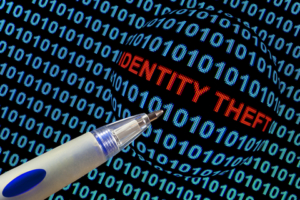Do you know what ATM stands for? For crooks, it stands for A Thief’s Moneymaker.

A new report from FICO says that “skimming” crimes have made their biggest spike in the past 20 years. This includes ATMs on bank premises, but of course, public ATM kiosks have seen the biggest spike.
The thief tampers with the ATM’s card receiver; the installed gadget collects card data which the thief retrieves later. “Skimming,” as this is called, also refers to capturing the PIN via a hidden camera.
With the stolen data, thieves craft phony debit cards, which they then use at ATMs or for purchases. In seconds, your bank account could be sucked dry—poof!
ATM users normally do not know that a skimming device is in place; they just swipe their card. The thief will come back to collect the skimmed data (likely in the middle of the night).
- He downloads your data.
- He burns it to a blank ATM card.
- He drains your bank account first chance he gets or goes on a wild shopping spree.
- All of this can happen within minutes to hours.
- The hidden camera may be concealed by a brochure slot near the machine—placed there by the crook himself—with bank brochures he got from inside the bank.
- The camera may be hidden in a nearby lighting fixture or even attached somewhere on the ATM.
Prevent Getting Skimmed
- Use only ATMs inside banks if possible. The riskiest locations are restaurants, bars, nightclubs and public kiosks.
- Regardless of ATM location, inspect the machine. A red flag is if the scanner’s colors don’t jibe with the rest of the machine.
- Jiggle the card slot to see if it feels like something’s attached to it.
- Inspect card slots at gas stations and other non-ATM devices that scan your debit card.
- Look around for areas a camera might be hidden. Even if all seems clear, cover your hand when you enter the PIN.
- Try to get away from using a debit card at all. At least with a credit card, you can dispute fraudulent charges before you lose any money (up to 60 days), but with a credit card, you have only a few days to do this.
- Frequently check your bank and credit card statements.
Robert Siciliano is an identity theft expert to BestIDTheftCompanys.com discussing identity theft prevention. Disclosures.
Comments